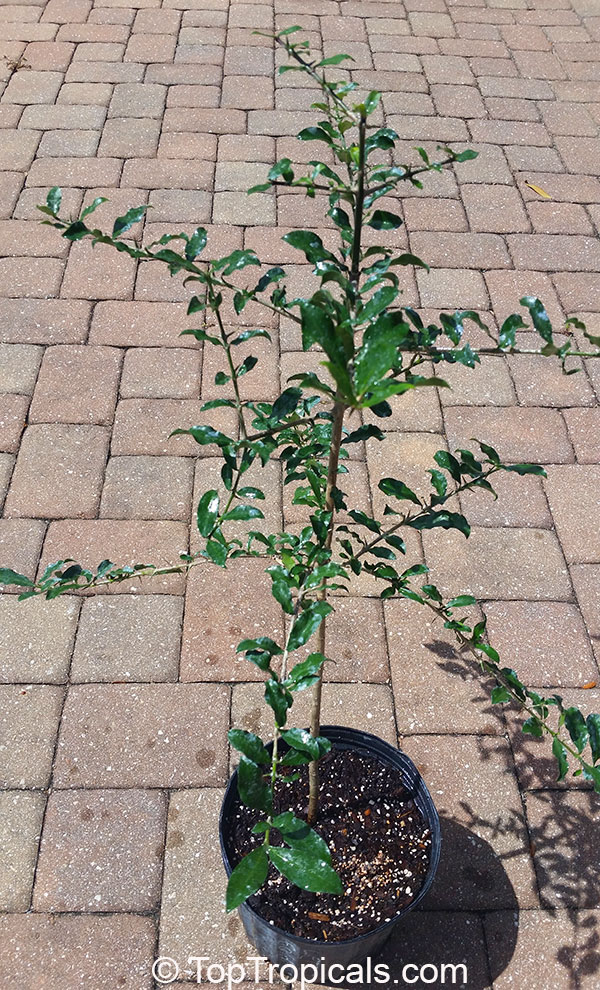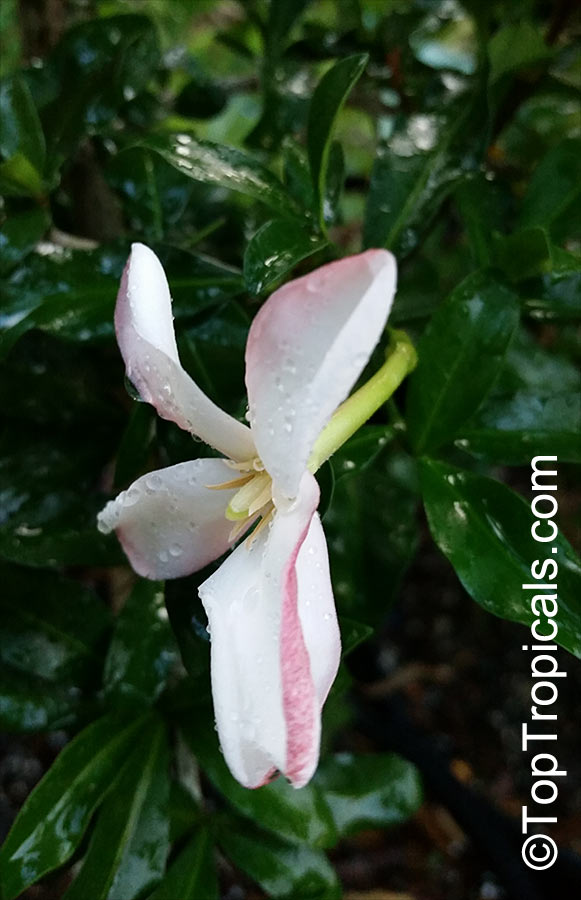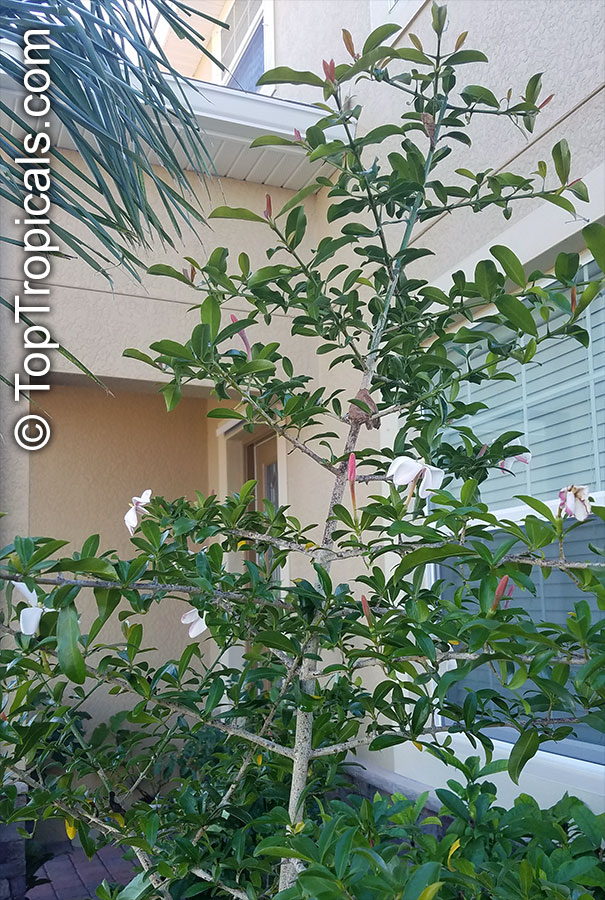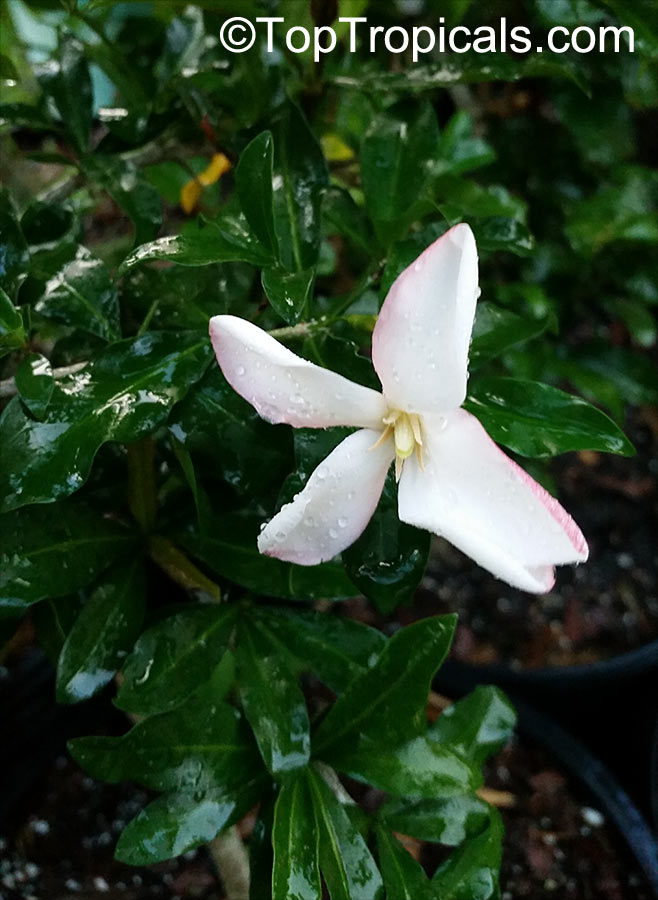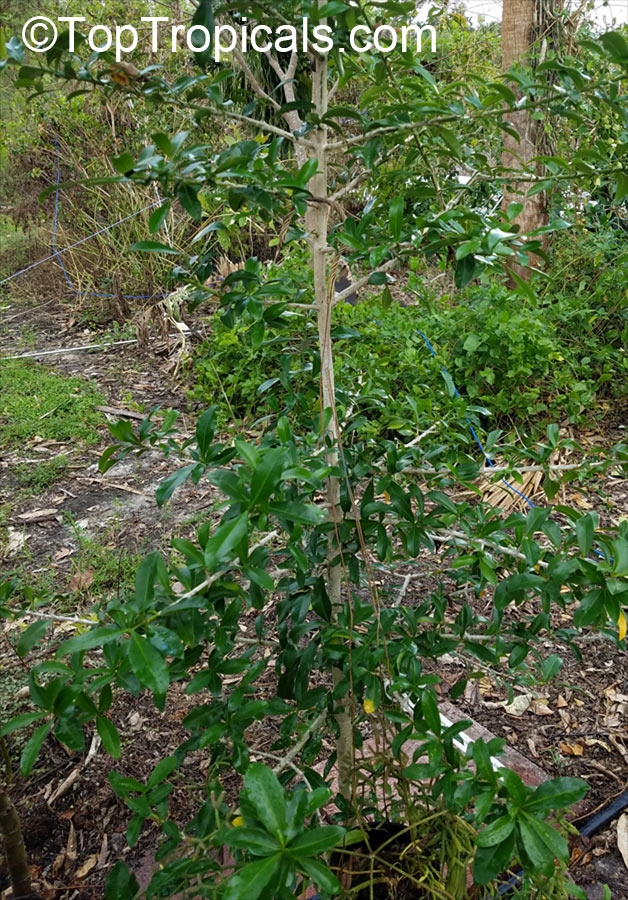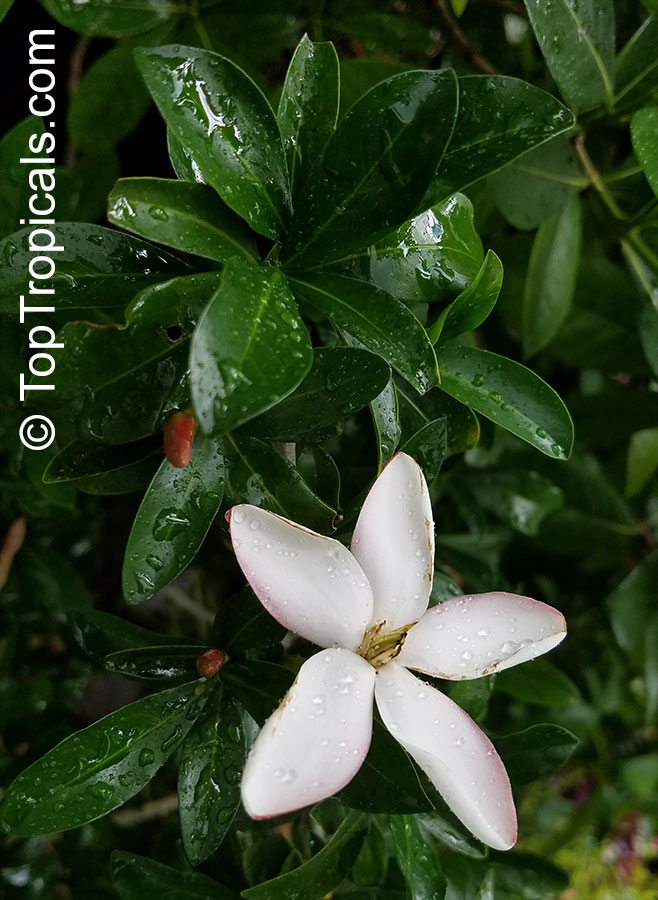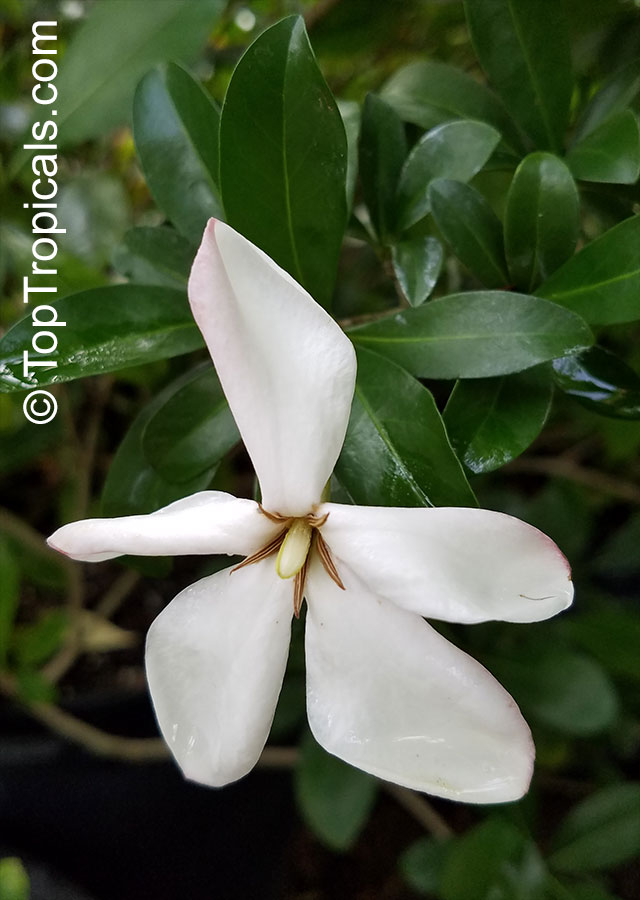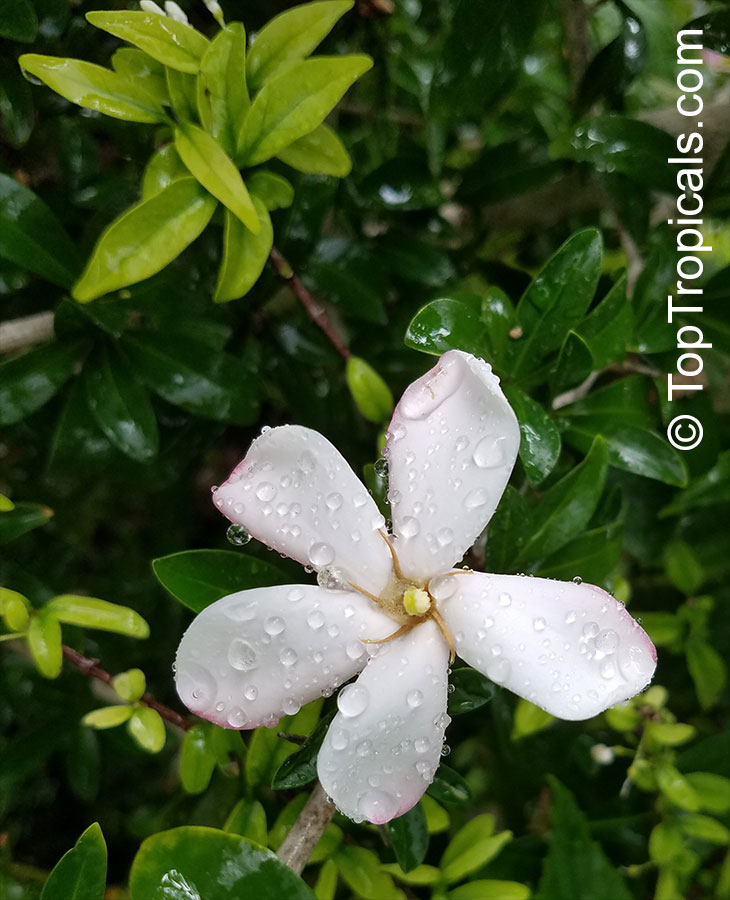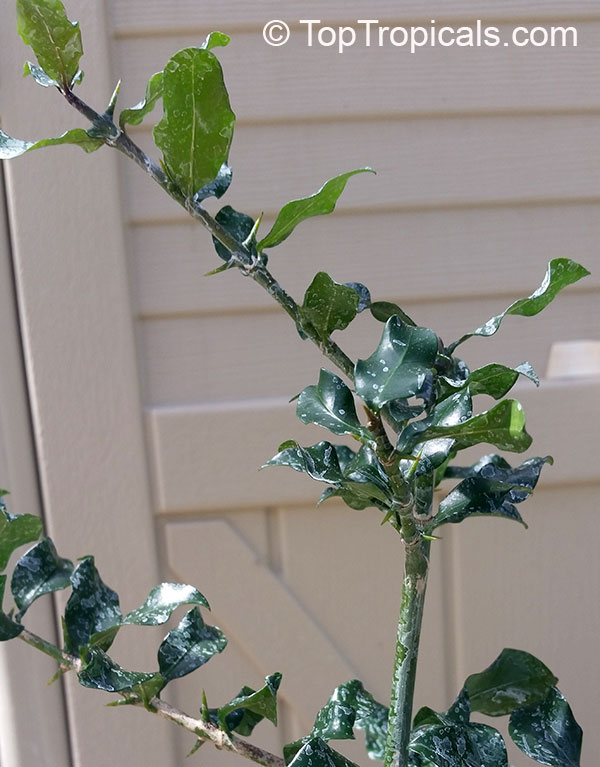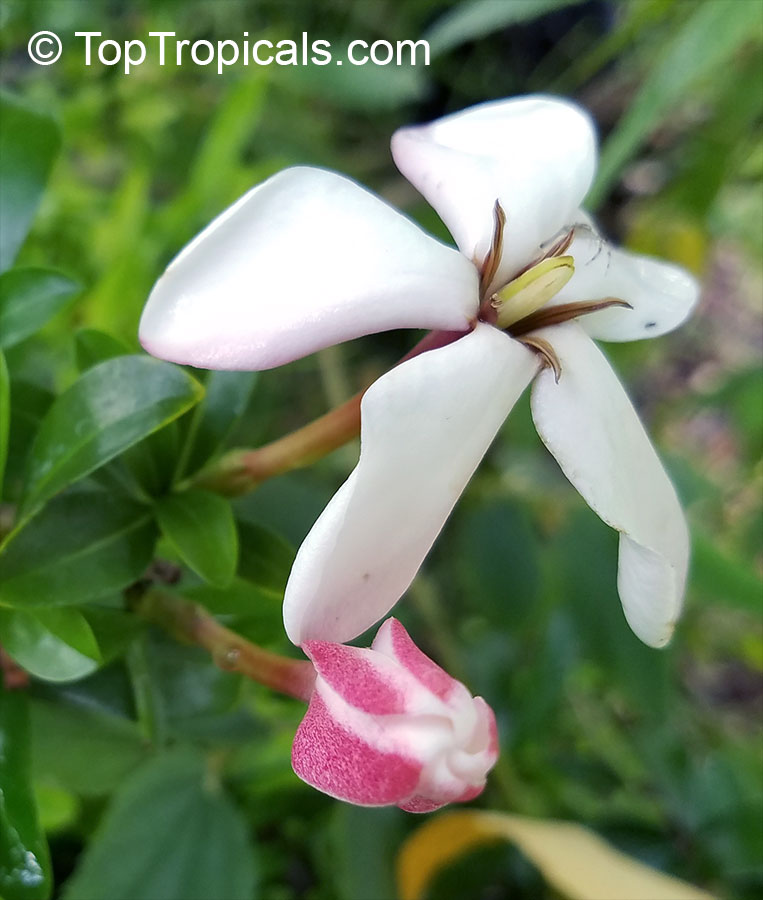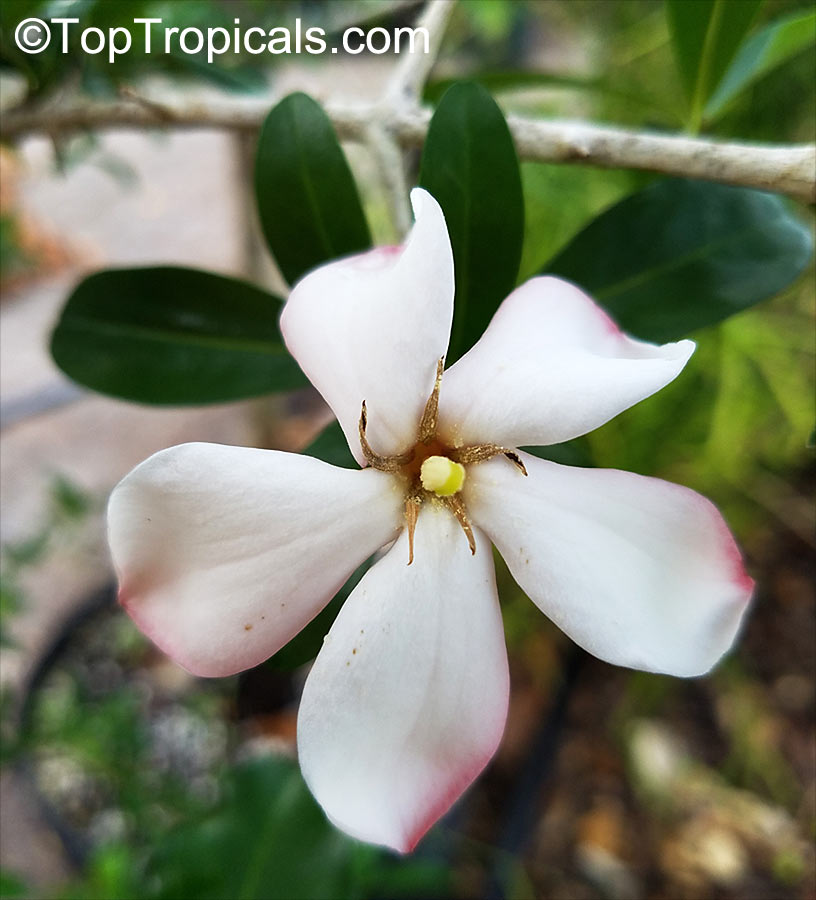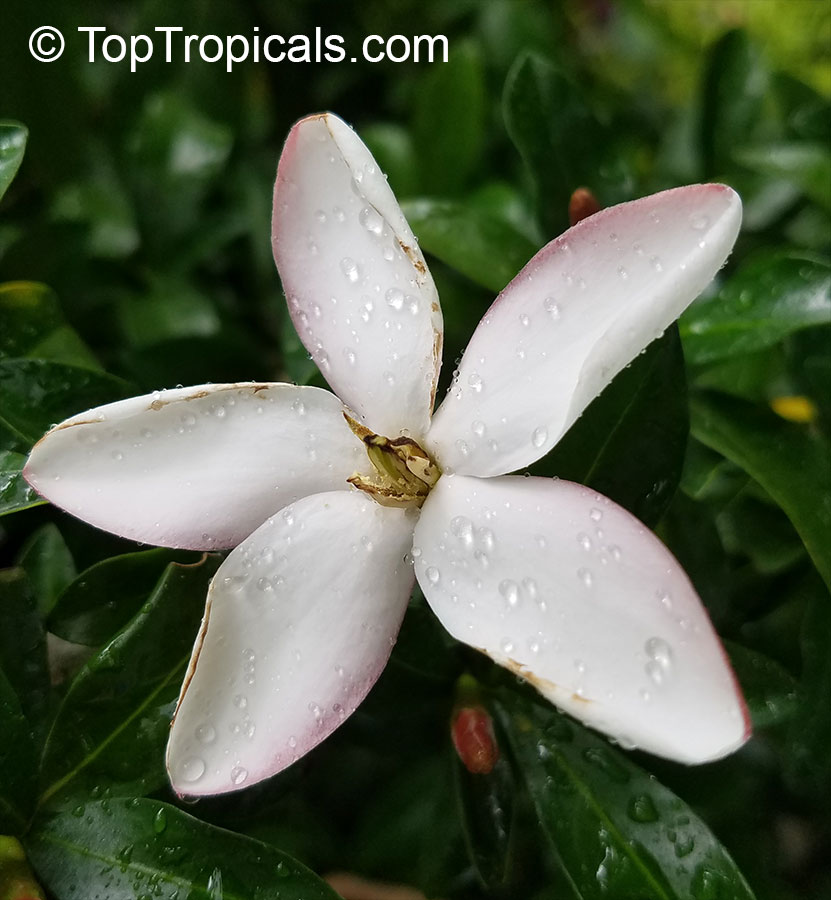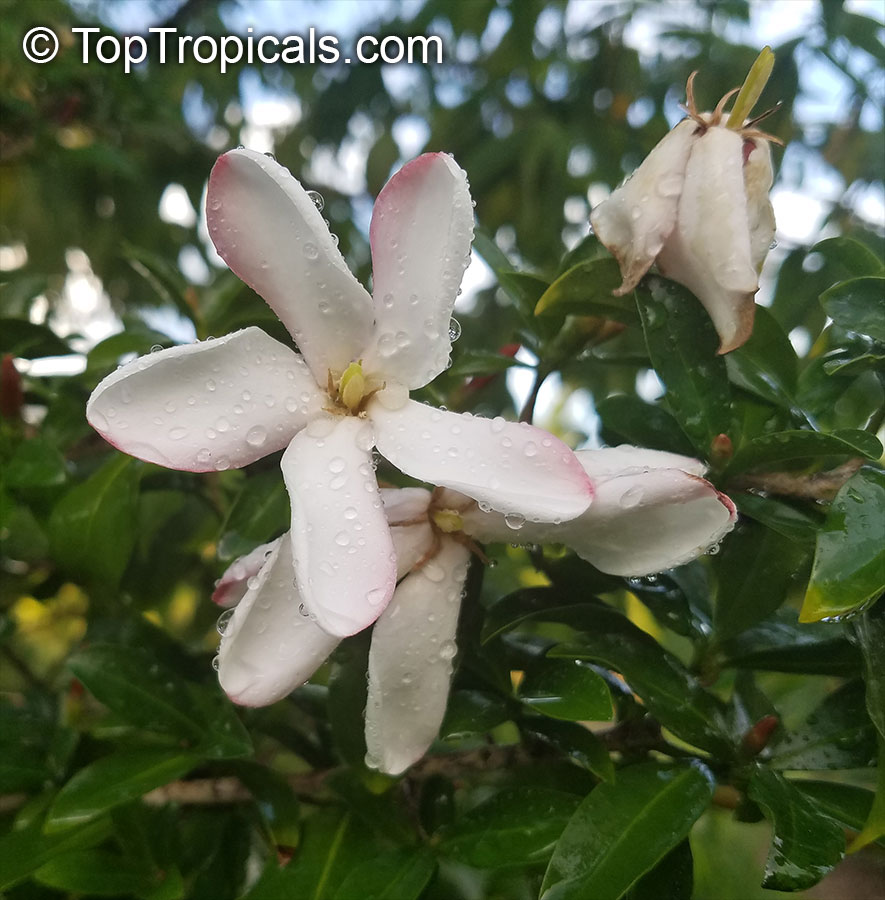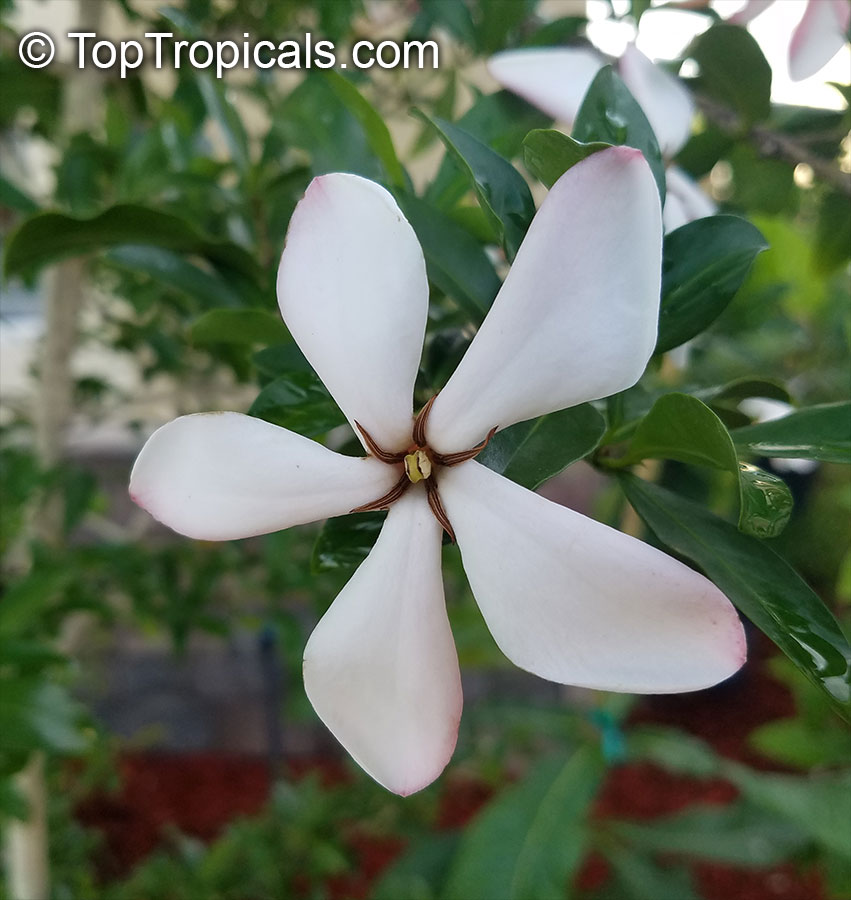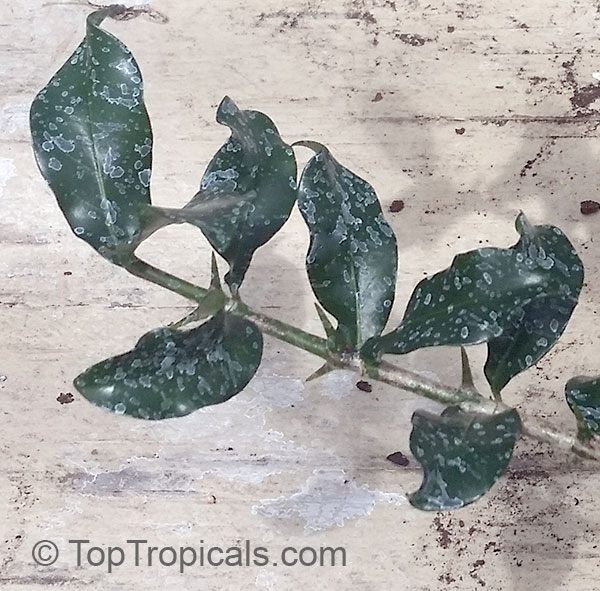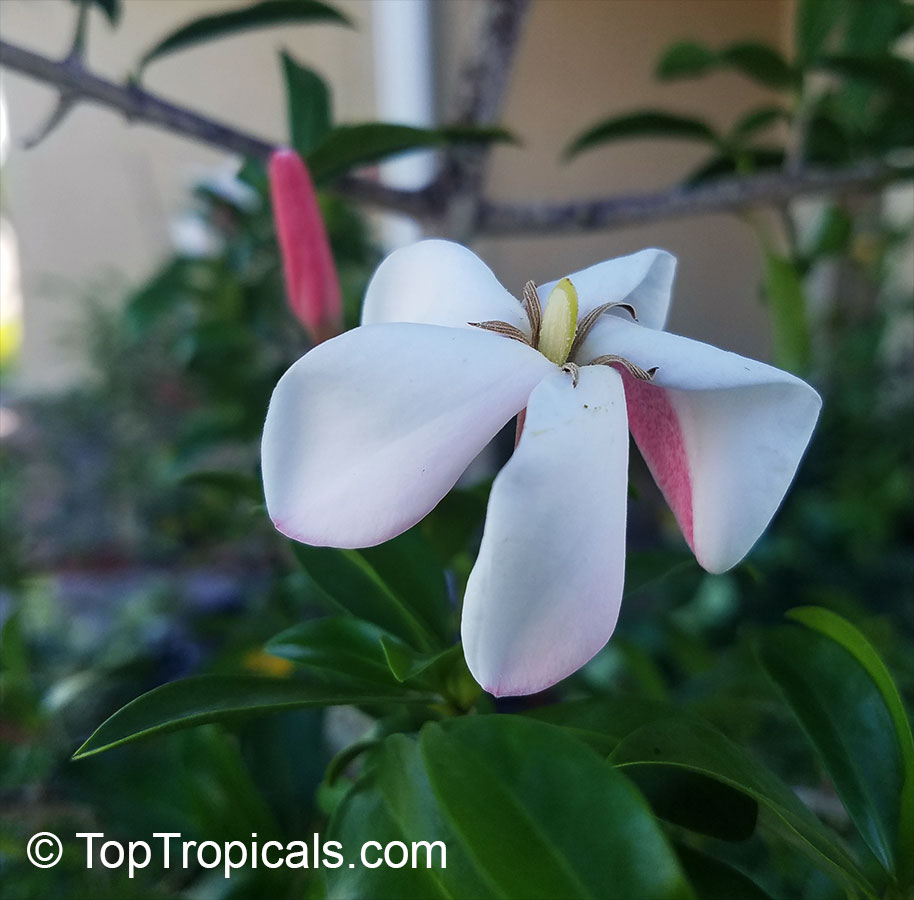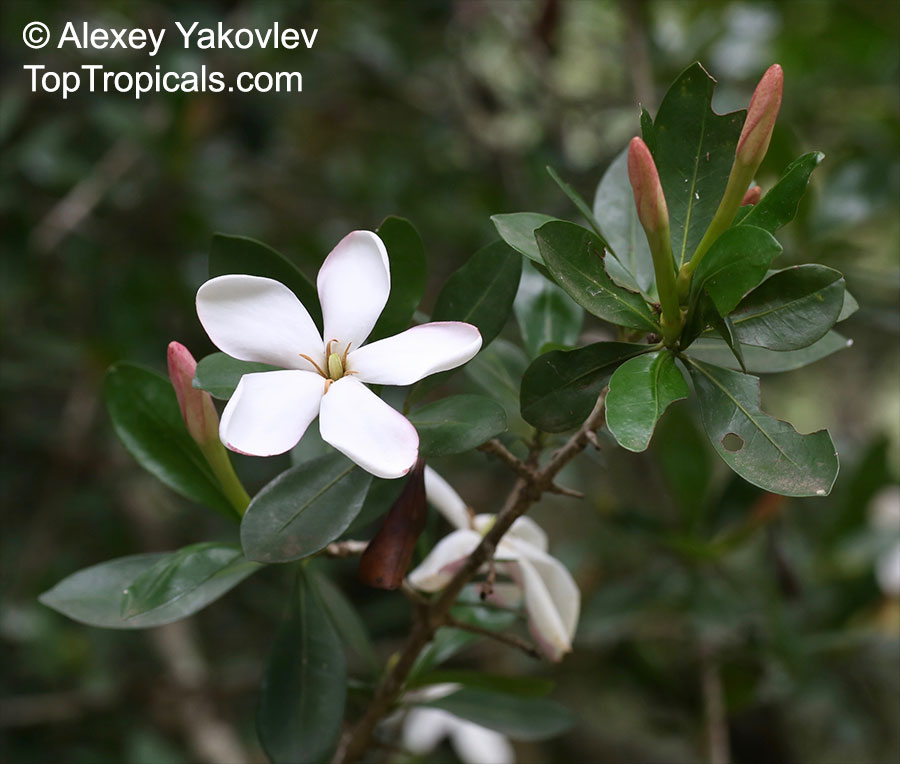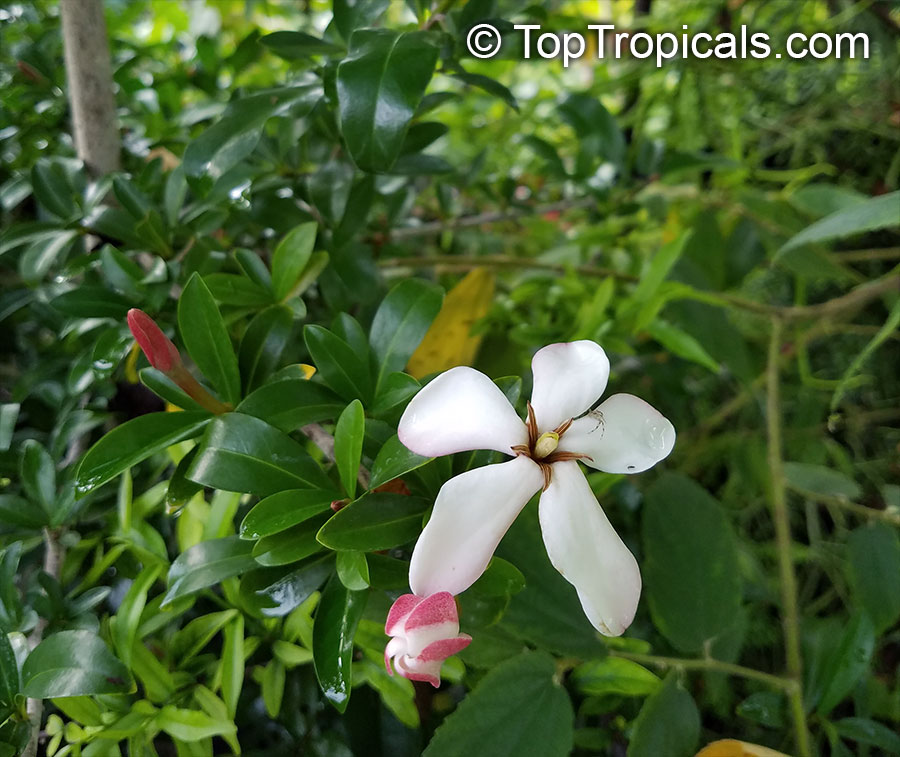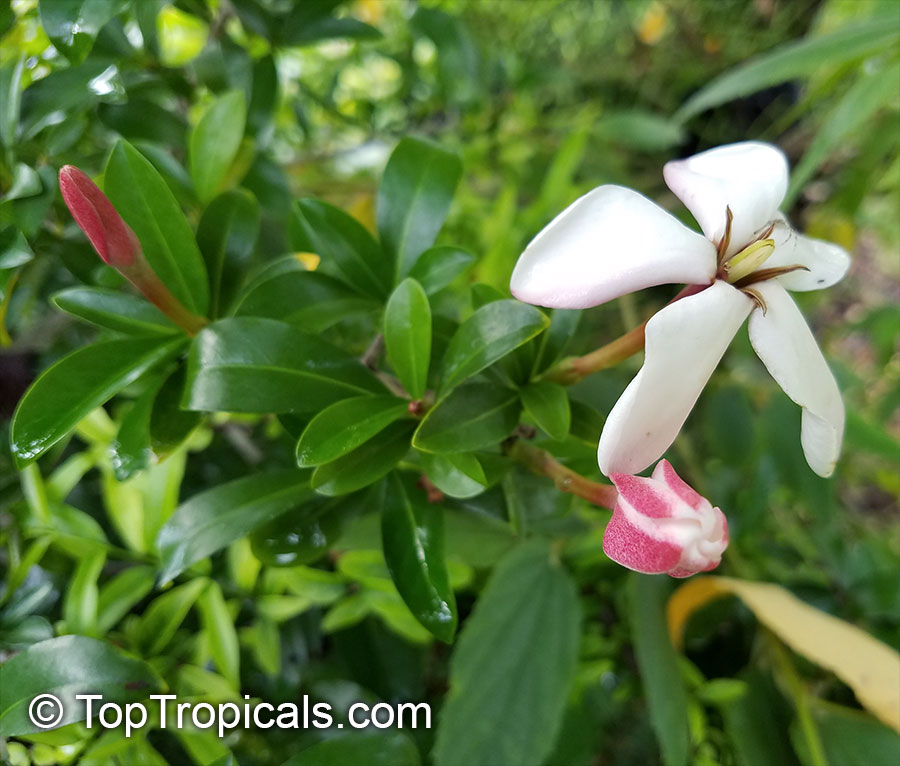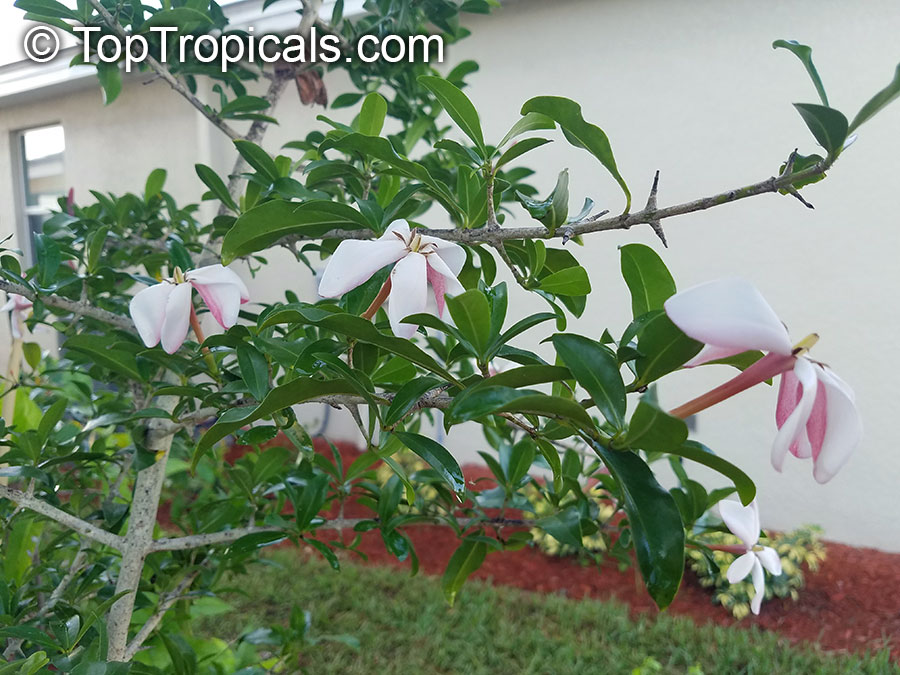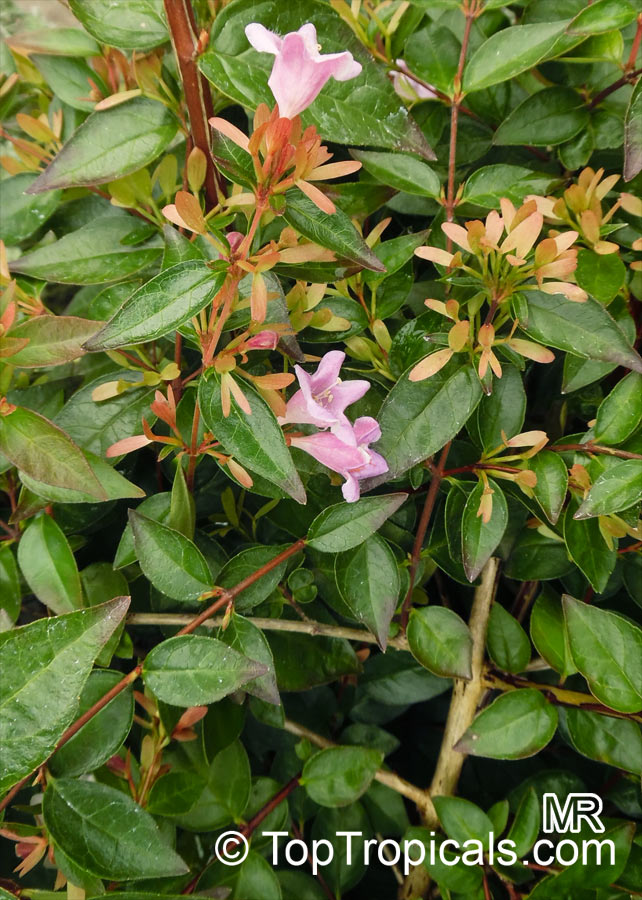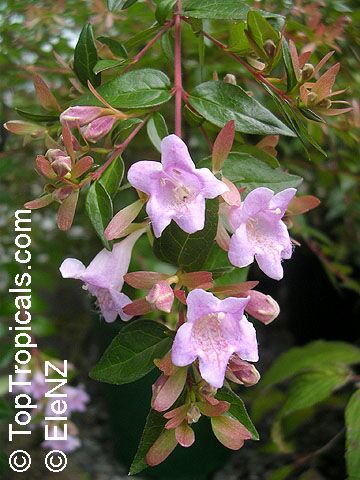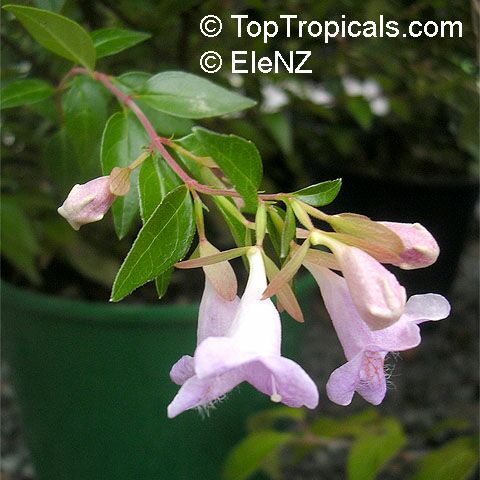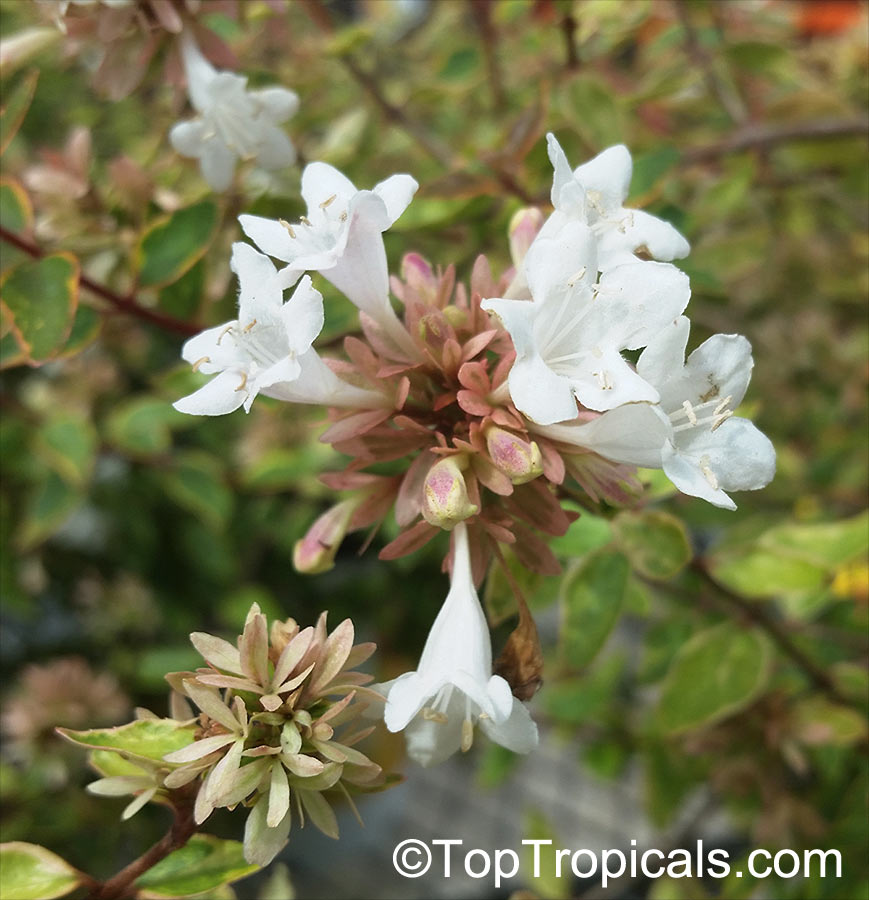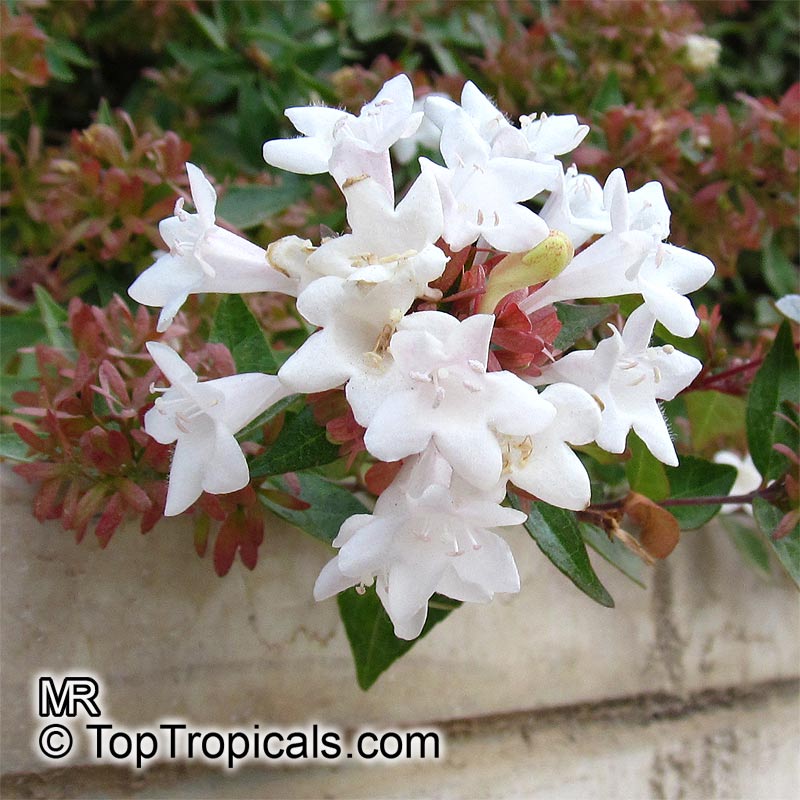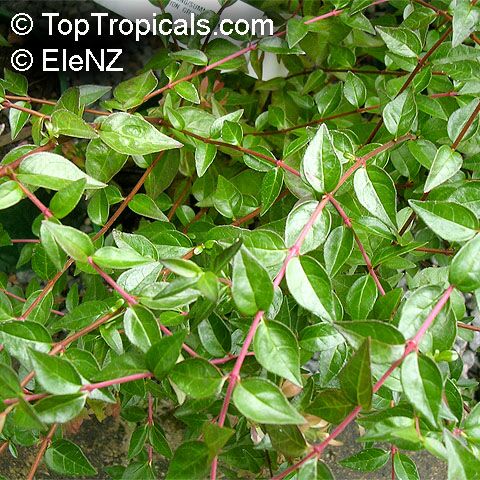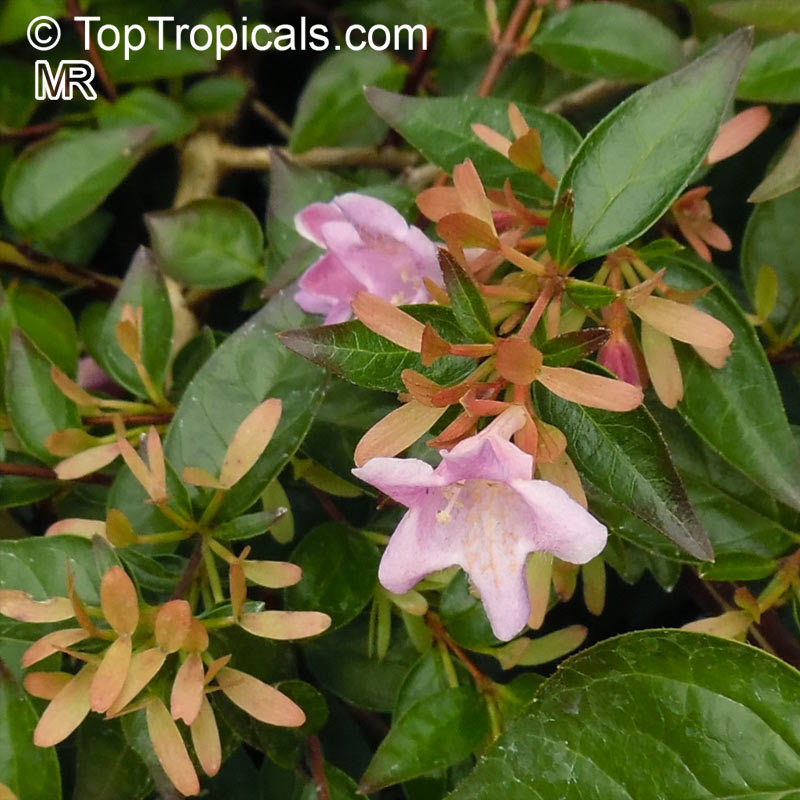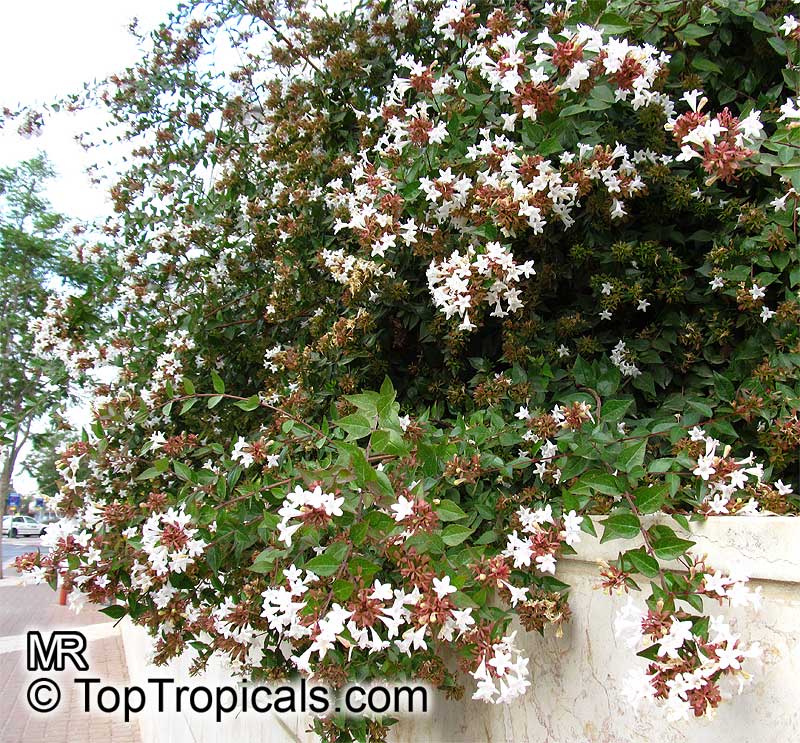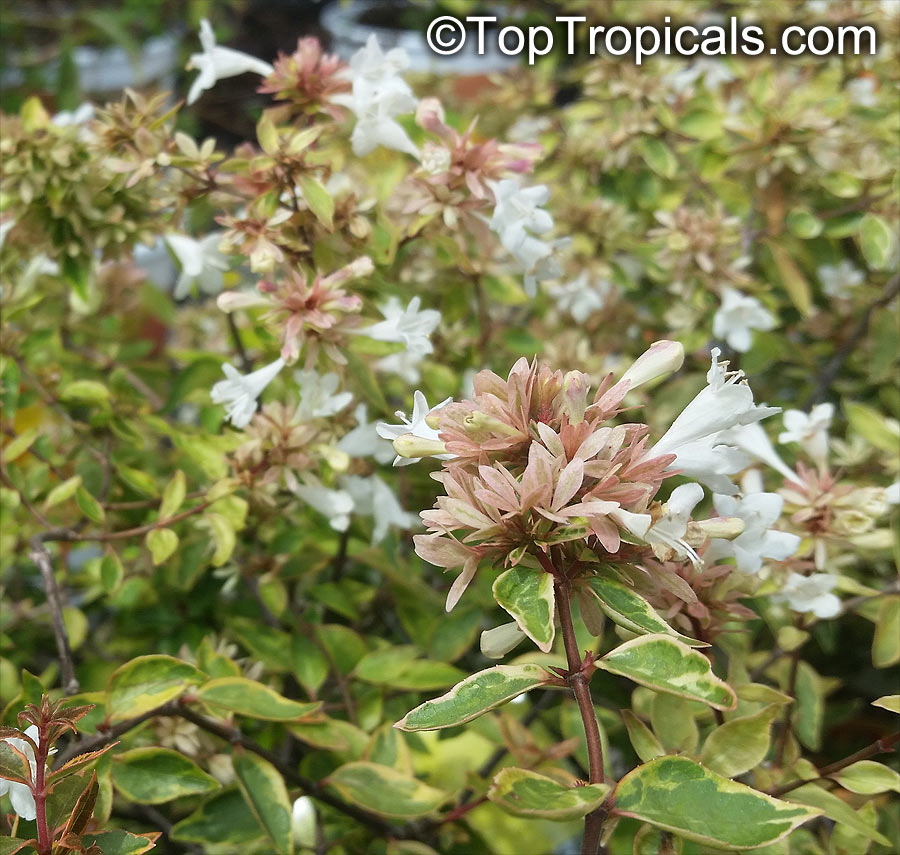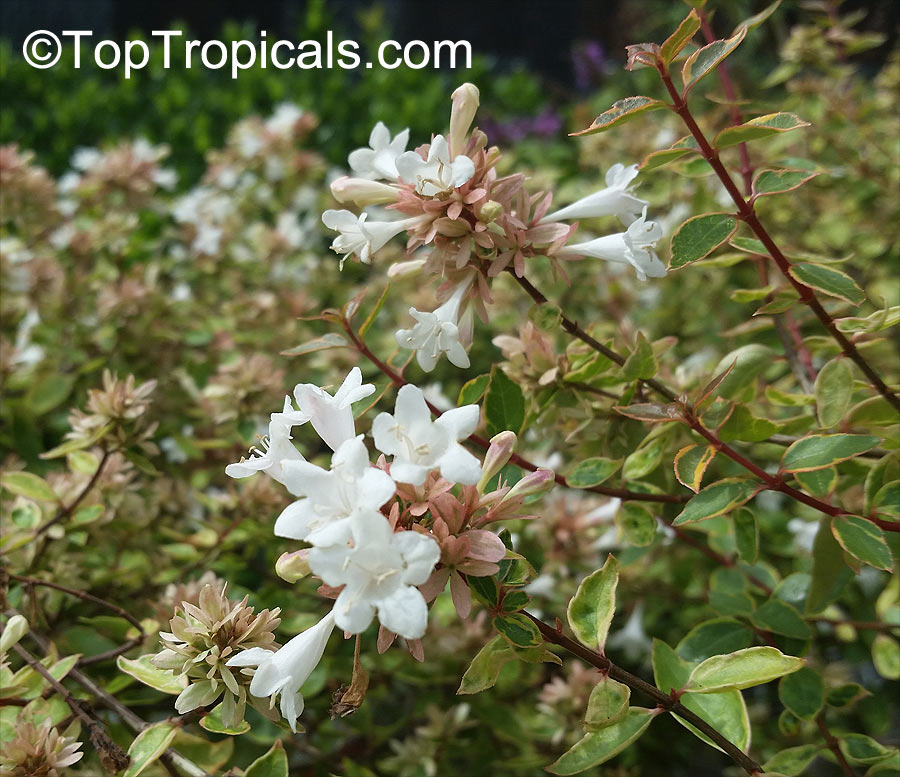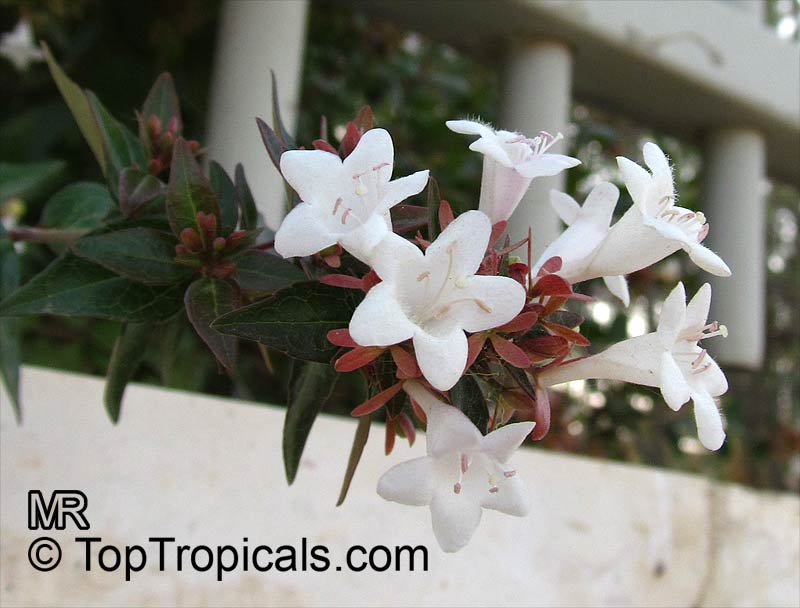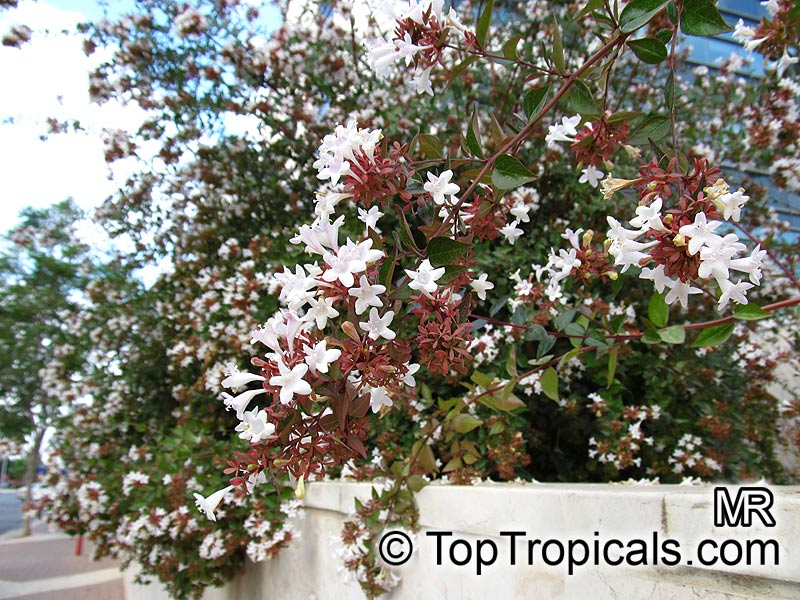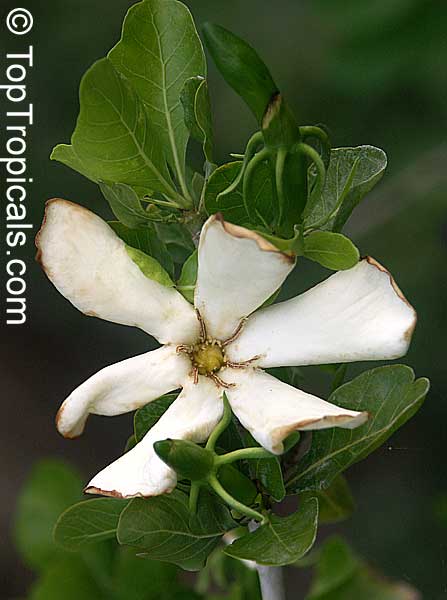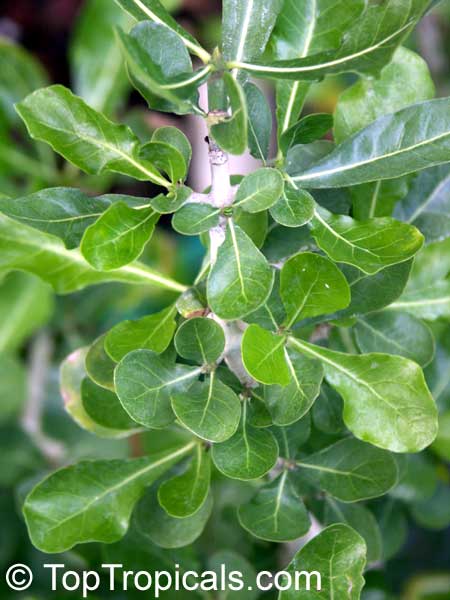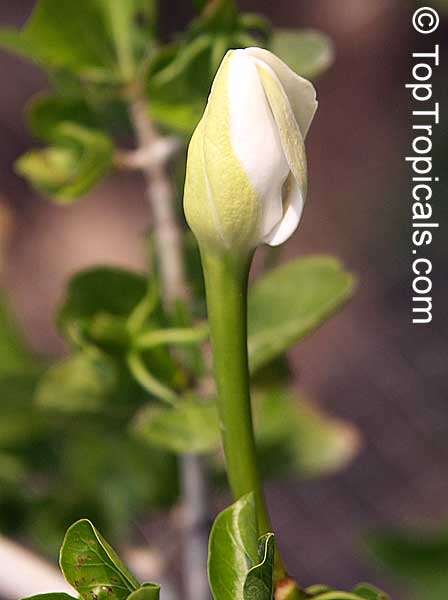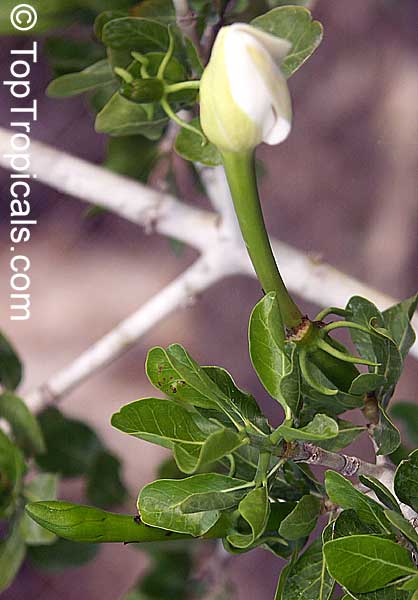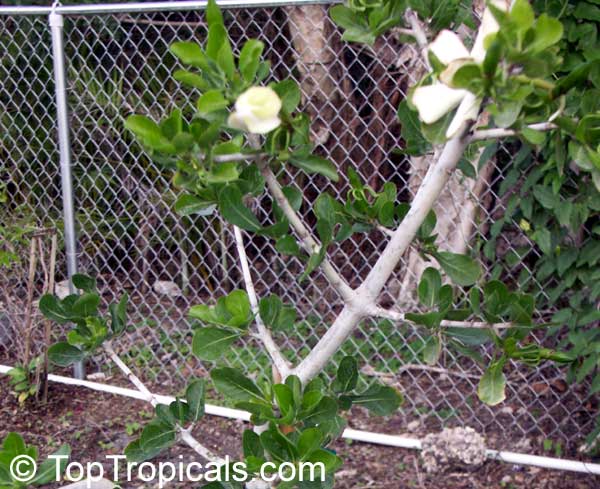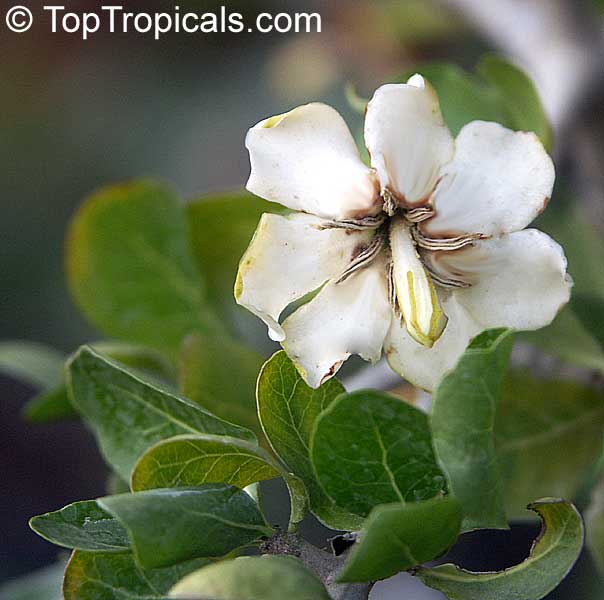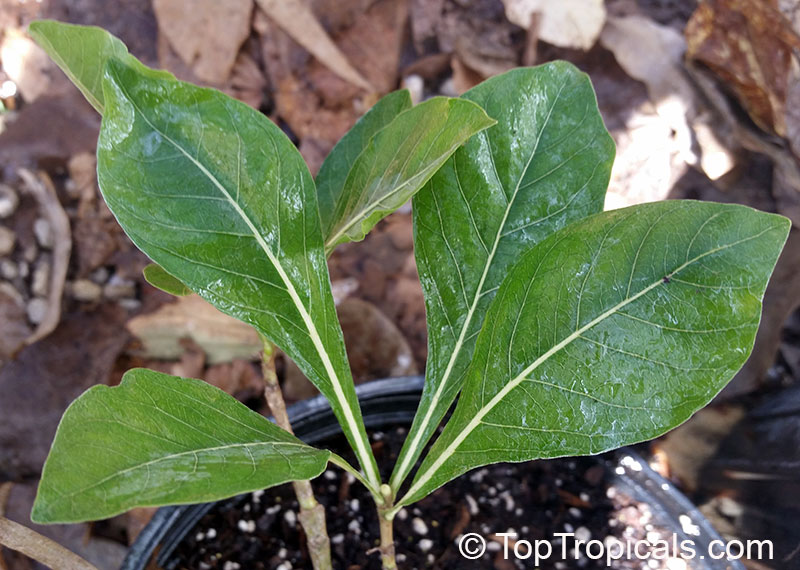Hyperacanthus - Search results
Top Tropicals Plant Encyclopedia
| Number of plants found: 3 |
Botanical names: Hyperacanthus amoenus, Gardenia amoena
Common names: Thorny gardenia, Murombe, Bembethu
Family: Rubiaceae
Origin: South Africa








Hyperacanthus amoenus is a large shrub or small tree native to South Africa, typically growing to 5-10 ft tall for a shrub and up to 10-20 ft for a tree. The glossy green leaves on the lateral branches are arranged in whorls of five and bordered by spines that are smaller than the leaves. Buds of the pinkish red flowers open up with white, off-white petals that are delightfully fragrant. After flowering, green fruits develop and become fleshy brown when ripe.
Hyperacanthus amoenus is quite easy to grow in full sun and regular watering. This species is suitable for growing in USDA Zones 10-11, and the mature plants can be tolerant of colder conditions, down to at least the 30s F for a short time. To ensure that the plant thrives in colder climates, it may be necessary to grow it in a pot in order to bring it indoors during the colder months. This will require extra care to make sure that it is given adequate water and light, and regular applications of fertilizer.
Botanical name: Abelia grandiflora
Common name: Glossy Abelia
Family: Caprifoliaceae
Origin: China










Abelia is a popular evergreen or semi-evergreen shrub with a rounded, fountain-like growth habit. It is fast-growing, growing up to 4-8 feet tall and 4-6 feet wide. Its leaves are fine-textured, glossy, oval, and dark green, usually 2 inches long, and the new growth has a bronze color. Abelia produces small, white and pink tubular flowers in clusters at the end of its stems, from summer to fall. The flowers are barely one inch long, but they are slightly fragrant - which attracts hummingbirds and butterflies.
This shrub is a great choice for planting near a pool, as it loves both full sun and semi-shade exposure. When watering it, allow the soil to dry out between waterings. It is mostly pest- and disease-free. Mature Abelias can withstand temperatures as low as 30 degrees Fahrenheit for a limited time.
Hyperacanthus amoenus is another popular evergreen shrub. It has pinkish red flowers with off-white petals that are fragrant, followed by green fruits that turn brown when ripe. This shrub is easy to grow, needing only full sun and regular watering - though it should be in USDA Zones 8 -9 for full protection from cold weather. For areas with colder climates, it is recommended to keep the plant in a pot and move it indoors in winter. In such a case, extra care should be taken to make sure it has enough water, light and fertilizer. Pruning may also be necessary to ensure the plant remains within the size desired.
Botanical names: Gardenia cornuta, Gardenia ternifolia
Common names: Natal Gardenia, Horned Gardenia, Wilde-appel
Family: Rubiaceae
Origin: Africa











Slow-growing shrub or multi-branched small tree, a bit succulent-looking due to its growth habit ans tiny leaves. It will grow eventually 7 to 10 ft tall, with erect and spreading main branches, branchlets sometimes with thick thorns, a trunk that is whitish grey, the bark is smooth, often flaking into thin peels. Spectacular, large white and yellow flowers with their sweet scent attract passersby from a distance to this small, much-branched tree. Leaves are smooth and crowded at the ends of twigs, usually in whorls of three, light glossy green, short-stalked, 1-2" size, oval to almost round. Flowers are solitary at the ends of short, rigid branches, borne November to March, white turning yellow, short-stalked, with a long, slender greenish tube, and spreading white lobes. The calyx is very unusual, with long, narrow lobes arising from its sides and not at its apex. The flowers are followed by smooth, glossy, golden yellow fruits. They are attractive, pear-shaped, woody, glossy golden yellow, hard and flattened, usually produced in large quantities between February and August. The long, slender flower tube and the white, sweetly scented flowers suggest that insects like moths and butterflies pollinate this plant. Decorative fruiting branches placed in a vase may remain fresh for up to month, since branches are able to absorb water readily. In traditional medicine, fruit and roots are boiled and used as an emetic. This very neat and decorative small tree is best suited for a spot in the garden where it will stand alone so that it gets all the attention it deserves, more especially when in flower. The genus name Gardenia was named after Alexander Garden, a medical doctor and naturalist from South Carolina. The species name cornuta means horned; perhaps referring to the remnants of the persistent calyx lobes of the fruit. This species was first collected in 1870 but it was only after 35 years that it was eventually described in 1906. The genus Gardenia has about 60 species in tropical and warm parts of the Old World, seven in southern Africa. Gardenia cornuta is not widely found in gardens. Another related species, Gardenia thunbergia, looks much alike due to similar growth habit and small leaves (which are pointed unlike rounded leaves of g. cornuta) and is another attractive species, worthy of cultivation. Because of its growth habit and slow growth rate gardenia cornuta is a good bonsai plant. Very closely related specie - Hyperacanthus amoenus (Gardenia amoena).
Nothing found
